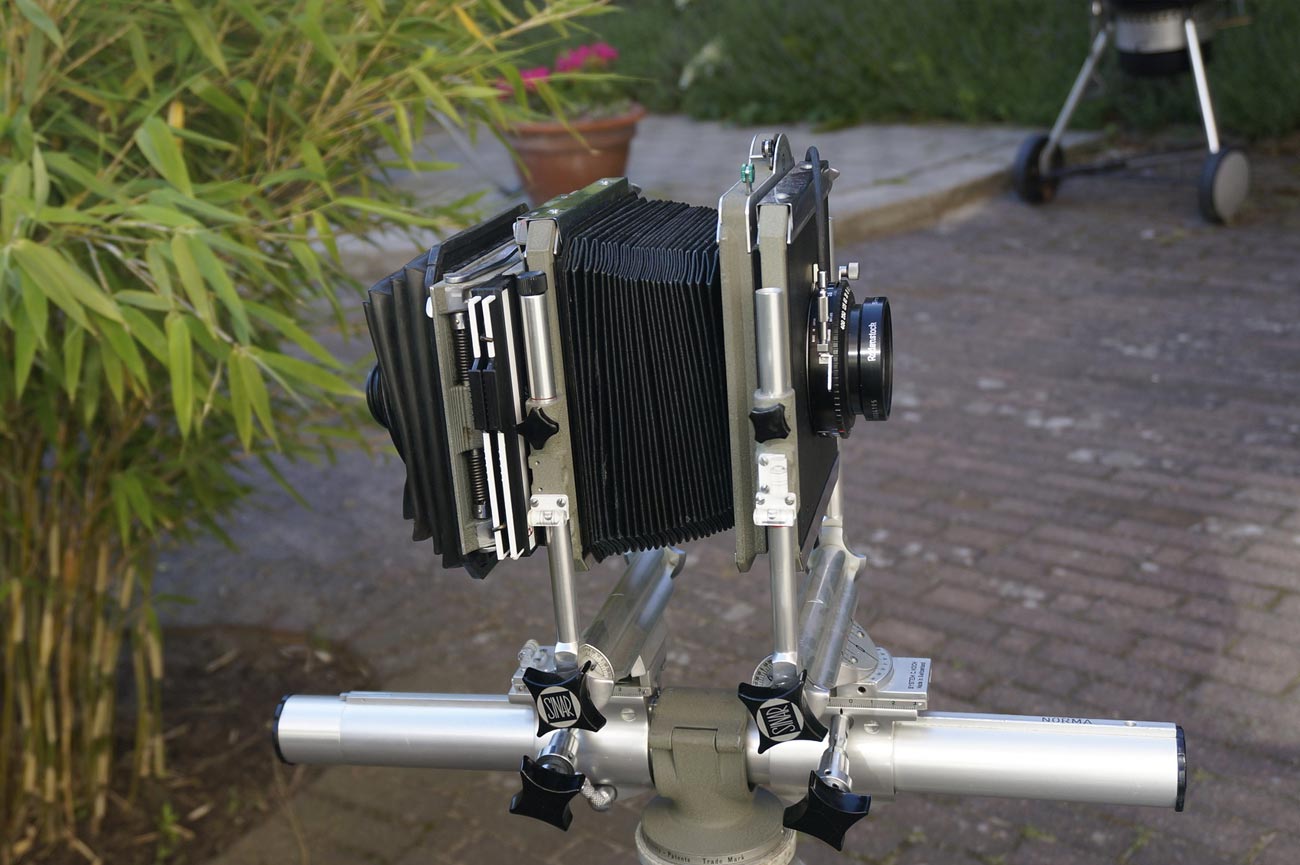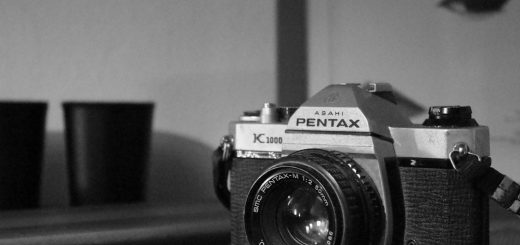Large Format Film Camera Types for Film Photography

Photo by Mathias Heinel. Licensed under CC BY-SA 2.0
The most popular camera type for large format film photography is the viewfinder camera. Most viewfinder cameras support 4×5 film or 8×10 film, allowing even more detailed and crisp images than the 35mm film camera and medium format cameras. However, large format cameras are often bulky and not as portable as the smaller film type counterparts.
Large Format Photography – The Viewfinder Camera
Viewfinder cameras offer more control over the image than 35mm or medium format cameras because the front and back of the camera can be adjusted. The front, lens plane, and the back, film plane, can be moved up or down as the bellows is a flexible material that will accommodate different shifts of movements of the planes. By moving the front and rear planes in various ways the photographer has maximum control of focus, depth of field, and perspective. For more information about these different movements, please see large format camera controls.
Basics for Using Large Format Cameras
Using a viewfinder camera is a much longer and time consuming activity than the smaller formats and requires much attention to detail. Film must be pre-loaded into special film holders in the complete dark before using the camera and must only be removed in the complete dark until processed. Because of the bulky size and heavy weight, a tripod should always be used. When viewing the scene through the ground glass of the back of the camera, the image will be upside down and backwards. Until you get used to working this way, composing your image will take some time. Below are some simplified steps to setting and using your viewfinder camera:
- Choose the position of your large format film camera and set it up on your tripod.
- Open the camera lens aperture all the way. This allows you to more easily see the image on the glass focusing plate.
- Focus your image and make final adjustments to the composition.
- Determine and set the aperture and shutter speed settings and cock the shutter.
- Load the film holder into the back of the camera and remove light tight slide.
- Fire the shutter with a cable release when the moment is right.
- Place the light tight slide back over the film holder.
That’s it. You may also consider making a second identical exposure. After all, it is a long process to set up for one shot with a large format camera, so you should consider taking a second shot while you have it set up properly.

















